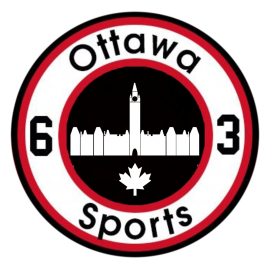Undoubtedly, COVID-19 restrictions have seemingly limited us from experiencing all indoor sports. As the capital region sits in its third wave, we’ve seen even more provincial regulations with outdoor sports experiencing even tighter restrictions.
Its understandable that team sports aren’t exactly feasible since social distancing measures can’t effectively be practised, however most single person outdoor sports like climbing, cycling, and running (to name a few), are starting to gain additional traction in the local area. One outdoor subcategory that has especially taken off are the handful of whitewater sports.
The Ottawa Valley has a hidden gem that is often overlooked, located along its own river. Spanning from downtown Ottawa to Petawawa, the massive Ottawa River, or simply “the Ottawa” as the whitewater community calls it, is home to the best rapids in North America for all types of whitewater sports, including rafting, kayaking and even canoeing.
So what are whitewater sports? There’s a handful of methods we can use to get from the top of a rapid to the bottom. If it’s your first time hitting the river, I recommend trying rafting (with an experienced guide) as it’s far safer, easier and little to no skill is required with the right crew. A typical raft usually holds 4-6 people, however in some instances, they can hold upwards to 12. Within the local tourism sector, companies like Wilderness Tours and Owl Rafting offer rafting opportunities with highly trained guides that are definitely worth checking out, especially if you’re looking to try out a whitewater sport for the first time.
Next is whitewater kayaking and if you don’t like tight spaces, this one isn’t for you. Unlike a raft, whitewater kayaks can tip on a dime, meaning if you flip, you’ll be sitting upside down, underwater, moving down a rapid (or even a waterfall) at very high speeds. It might not sound super appealing until you learn the essential skill known as a “kayak roll” which allows the kayaker to flip back onto the hull of their boat, sitting upright again. Once this is mastered, the fear of sitting upside down underwater seems far less dreadful. Unfortunately, kayaking can be trickier to pick up as the best way to learn is through connections since training courses can be tough to find.
Unlike most sports, you win this sport through achieving personalized goals that are set beforehand. This means that unless you’re entering high-end competitions, it’s not competitive and purely recreational. Since we’ve seen more and more of our favourite sports cancelled, many people have been turning to outdoor activities as a source of excitement and since many whitewater activities are outside and don’t follow COVID logic, many of these sports can help us find that adrenaline that has been sitting idly in our systems since early 2020. This being said, it is still important to ease into whitewater activities and not jump the gun and run a Class V rapid first chance we get.

The Ottawa River
Honing in on the valley region, it might seem overwhelming to hear that the Ottawa is often used as a practice river for some of the best whitewater kayakers in the world due to its massive features and high water volume. Yet it is worth noting that the majority of these rapids are actually perfect for learning due to their width and depth. Many famous rapids in Colorado, South Africa and Brazil are an adrenaline junkie’s dream due to their massive drop-offs, low water volume and unavoidable danger levels, however the Ottawa is far different and much more forgiving.
Historically, the Ottawa River was used as a logging channel as forestry workers in the mid to late 1800s would use the slope of the river to haul fresh timber down stream. In order for this to work effectively, the river needed to be deep and wide to prevent buildup. Fast forwarding to 21st century, river dimensions now benefits many river goers as its depth prevents rafters from crashing into shallow rocks. It also allows kayakers to avoid face grinding, an experience in which a kayaker is upside down and scrapes their face on the riverbed – yes, it is as gruesome as it sounds. The width allows for new kayakers and rafters to be selective in their danger level, allowing them to choose different routes, or “lines,” to avoid river features that might pose as a threat depending on their risk tolerance.

Best of all the Ottawa River is divided into sections with flat water between each rapid. This means in the event of an accident or a tip, you’ll have an abundance of time to get rescued or swim to shore. Also, if you don’t feel comfortable with the Class III or IV rapid coming up, you can simply opt out and portage along the trails located along the river bed. The forgiveness and alternative options for beginner whitewater ‘yakers and rafters makes the Ottawa the perfect river to get out and experience during the quarantine. With everything less than an hour away from downtown, it is definitely worth checking it out.
